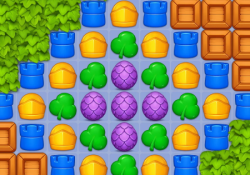Side Effects is a short-form experimental game where two test subjects face off in a tense survival scenario inside a fictional medical trial. Each turn, players choose whether to consume a pill, use an item, or pass—knowing that some pills will heal, some will harm, and others bring unpredictable consequences. The game operates like a twisted version of Russian roulette, driven by strategy, chance, and gradually rising stakes. With minimal visuals and a simple interface, the focus stays entirely on decision-making and psychological tension.
Mechanics of Risk and Reaction
The core gameplay of Side Effects revolves around turn-based decisions. Each participant has a set of randomized pills in front of them. Players don’t know exactly what each pill will do until consumed, but effects can range from healing to poison, or even status changes that influence future turns. Alongside pills, there are single-use items—syringes, defibrillators, boosters—that allow players to recover, attack, or protect themselves. Tolerance plays a critical role: some pills become ineffective or deadly if overused, and watching your limits is as important as reading your opponent.
Key elements that affect gameplay:
- Randomized pill effects per session
- Item usage with tactical timing
- Tolerance meter that alters risk levels
- Turn-based actions between two players
- Victory condition: outlive the opponent
Visual Style and Technical Framework
The design of Side Effects is intentionally stripped down. The setting is a clinical test room with cold lighting and minimal distractions. Most information is conveyed through text and icons, creating a feeling of unease and focus. While sound design is still in development in this early prototype, the silence adds a layer of tension. The game can be played in-browser, but its creators recommend the downloadable version for smoother performance and visual fidelity.
Because it was built in just 10 days, this version contains known issues—missing sounds, AI inconsistencies, and interface quirks. However, these rough edges don’t overshadow the central experience. The matchups are fast, intense, and unpredictable, offering moments of surprise even after repeated sessions.
Strategy, Uncertainty, and Replay Value
Despite its simplicity, Side Effects encourages players to think several moves ahead. Trying to guess what the other test subject might do next—take a pill, heal, or strike—adds a psychological layer to every turn. Losing can happen suddenly if a bad pill is taken or a vital item is misused. Victory feels satisfying not just because of chance, but because of choices made under pressure.
The short rounds and randomized elements give the game strong replay value. Each session is different, making it ideal for quick play sessions or local competition. Future development may include expanded pill libraries, more complex AI, sound effects, and new gameplay modes. Even in its prototype form, Side Effects delivers a compact but engaging experience that invites players to test their nerve and strategy in a world where survival hangs on what’s swallowed next.






























